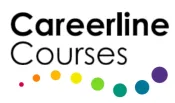Advertising and Promoting is a form of communication used to persuade an audience to take some action with respect to products, ideas, or services. Most commonly, the desired result is to drive consumer behavior with respect to a commercial offering, although political and ideological advertising is also common. This Advertising and Promoting online course will help you promote your business or products effectively as well as improve your ability to effectively train and handle sales staff; improve your targeted marketing; direct inquiries and much more.
Course Aims:
- Analyse a market and understand what prompts people to choose one product or service over another.
- Determine the promotional effort on an identified target market.
- Explain how to organise and/or conduct displays.
- Plan an Advertising and Promoting program.
- Review a promotions campaign.
- Explain how to choose and develop marketing of new products and services.
- Explain how to organise and/or conduct promotions.
- Develop a sales approach for a product or service which has a difficult sales history.
- Plan a sales staff training program
- Develop different advertisements and different promotional leaflets or brochures
- Describe promotional and advertising techniques using electronic media, in particular the phone and the internet.
- Determine an appropriate direct mailing campaign.
- Design a show/exhibition stand
- Explain how to organise or conduct shows
Detailed Course Outline
This Advertising and Promoting course is made up of a number of lessons or units. Each of these has self assessment questions, a set task (practical homework) and an assignment which you can upload online.
There are 10 lessons in this course:
1. Analysing the Market
-
- Scope and nature of Promotions and Marketing
- Role of Marketing
- Approaches to Marketing (The Production Approach: 1820sto 1910s, The Sales Approach: 1920s to 1960s, The Marketing Approach: Stage One -1960s to 1980s, The Marketing Approach: Stage Two – 1980s to Present)
- Goals of Marketing
- What makes people buy (Attitude, Defining attitudes, How attitudes form, Changing attitudes)
- Practical Applications
- Strengthen an existing attitude
- Develop a change in attitude
- Increase involvement
- Focus on changing several different attitudes toward a product
- Message Evaluation and Selection
- Message execution
- What words sell
- Deciding to Buy
- Rational Decisions
- Heuristic Procedures
- Decision Making Process (Recognising a Problem, Seeking Information, Evaluating Alternatives, Purchase Processes)
- Understanding Communication (Types, Methods, Channels, etc)
- Managing the Marketing Process (Organising, Analysing, Select Targets, Develop the Mix, Managing the marketing Effort)
- Market Research (Types of research, Gathering data)
- Managing the Marketing Plan
2. Target Marketing
-
- The Process of Identifying a Target Market
- Micro marketing
- Developing a Marketing Plan
- Organising a Planning Process
- Reviewing (Mission statement, Goals and Objectives)
- Establishing Market Objectives
- Increasing Market Share
- Expanding Product Mix
- Broadening Geographic Range
- Expansion through Export
- Maximising Customer Service
- Develop Objective Focused Strategies
- Increasing Market Share
- Analysing Opportunities
- External Influences (General economy, Government, Overseas, Demographics, Technology, Changing customer values, Competitor activity, Alternative marketing methods)
- Internal Influences (Resources, Market Share, Product characteristics, Advertising, Price, Financial capacity, Innovative potential)
- Selecting Target Markets
- Market Segmentation
- Mass Marketing
- Concentrated or Niche Markets
- Differentiated Markets
- Physical Basis for Segmentation
- Behavioural basis for Segmentation
- Developing a Marketing Mix (Product, Price, Promotion, Distribution)
- Brand Names, Symbols, Logos
- Packaging
- Positioning and Image
- Providing warranties
- Price (Pricing Objectives, Pricing Methods, Cost-Price margin, Competition based Pricing, List and Discount Pricing)
3. Display and Display Techniques
-
- Channels of Distribution
- Market Coverage (Intensive, Selective, Exclusive Distribution)
- Warehousing
- Physical Distribution and Coverage
- Inventory Control
- Determining Emphasis within Marketing Mix
- Product Life Cycle
- Product Strategy
- Shop Layout
- Fixtures and Fittings
- Space Available
- Displaying Products for Sale
- What Sells Best
- Spacing
- Quantity Displayed
- Merchandising Suggestions
- Stock Control
- Merchandising Program
- Signs, Signposting.
4. Advertising and Promotions Strategy
-
- Promotional Element
- Publicity
- Public Relations
- Forms of Advertising
- Sales Promotion
- Personal Selling Method
- Promotion Principles
- Scope of PR
- Steps in Designing a PR Strategy (Set Advertising Objectives, Decide Advertising Budget, Decide Advertising Message, Decide Media to Use, Evaluate Advertising Effectiveness).
5. New Product Development
-
- Product Line Decisions
- New Products
- Tracking Trends
- Knowing Your Customers
- Packaging
- Cost-Benefit Analysis
- Financial Forecasting
- Project Revenues and Costs
- Expenditure Breakdown
- Revenue Breakdown.
6. Sales Techniques
-
- Promotion and Sales
- Steps in the Sales Order
- Understanding Persuasion
- Materials of Persuasion (Know the Audience, Subject and Yourself, Influencing Opponents, Influencing Neutrals, Handling Criticism, Logical Persuasion)
- Questioning
- Sales Staff Training
- Theory of Helping
- Strategies (Traditional Approach, Task Approach)
- Common Strategies for Staff Training and Teaching
7. Writing Advertisement
-
- Purpose of Advertising
- Writing an Effective Advertisement
- Structure of an Ad
- Importance of Colour and Size
- Advertisement Creation (Develop Product Awareness, Provide Information, Develop a Desire, Develop Conviction, Differentiate Brand, Make a Decision)
- The Advertising Message
- Message Generation
- Combining Rewards and Experiences to design a message
- Delivering the Message
- Advertisement Creation Checklist
- Verification and Proofing
8. Electronic Marketing -Telephone and Email
-
- Telephone Manner
- Managing an Unmanned Phone
- Internet Promotions ( Larger audience, Lower Conversion Factor, Different Etiquette, Different Cost Structures, etc)
- Netiquette
- Ways of Using Web
- Web sites
- Site Construction
- Site Use
- Emails
9. Direct Mailing
-
- Types of Direct Mailing (The Direct, The Informative. The Reminder, The Utility)
- Advantages, Disadvantages, Appropriateness
10. Exhibitions and Shows
-
- Types of Exhibitions
- Judging it’s Value
- What can go Wrong
- Catering for People Overload
- Measuring Success
- Organising an Event
- Planning a Display
When you have completed the lessons of your Certificate course, you will be given the option of taking the optional exam. It’s okay if you don’t want the exam, we still issue your Careerline Certificate. For Advanced Certificates however, the exam is compulsory (per module) and are included in the course fee.


